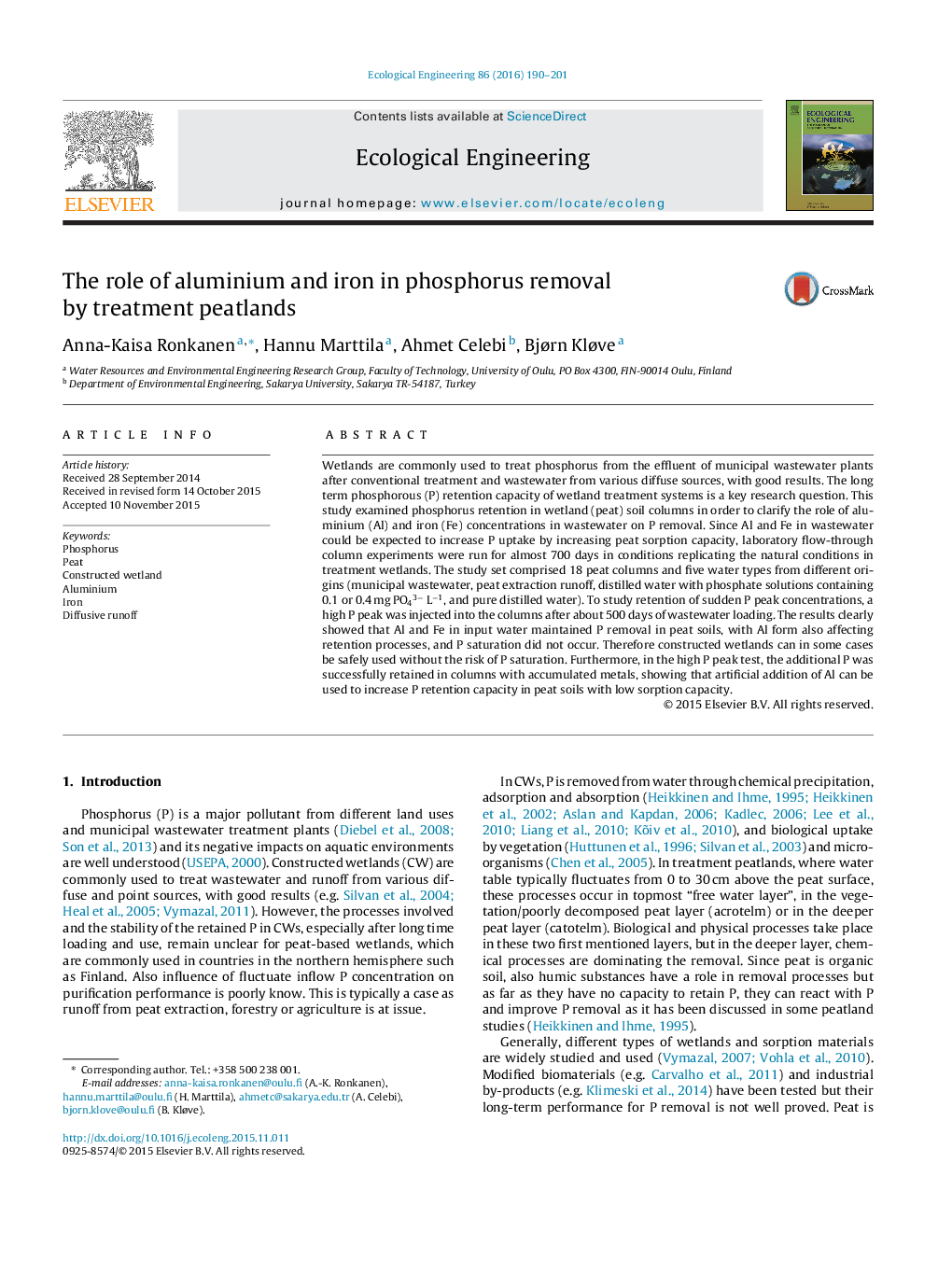| Article ID | Journal | Published Year | Pages | File Type |
|---|---|---|---|---|
| 4388930 | Ecological Engineering | 2016 | 12 Pages |
•Use of natural waters and intact samples in P removal tests are essential.•Stress test highlighted importance of inflow quality and Al/Fe in P removal capacity.
Wetlands are commonly used to treat phosphorus from the effluent of municipal wastewater plants after conventional treatment and wastewater from various diffuse sources, with good results. The long term phosphorous (P) retention capacity of wetland treatment systems is a key research question. This study examined phosphorus retention in wetland (peat) soil columns in order to clarify the role of aluminium (Al) and iron (Fe) concentrations in wastewater on P removal. Since Al and Fe in wastewater could be expected to increase P uptake by increasing peat sorption capacity, laboratory flow-through column experiments were run for almost 700 days in conditions replicating the natural conditions in treatment wetlands. The study set comprised 18 peat columns and five water types from different origins (municipal wastewater, peat extraction runoff, distilled water with phosphate solutions containing 0.1 or 0.4 mg PO43− L−1, and pure distilled water). To study retention of sudden P peak concentrations, a high P peak was injected into the columns after about 500 days of wastewater loading. The results clearly showed that Al and Fe in input water maintained P removal in peat soils, with Al form also affecting retention processes, and P saturation did not occur. Therefore constructed wetlands can in some cases be safely used without the risk of P saturation. Furthermore, in the high P peak test, the additional P was successfully retained in columns with accumulated metals, showing that artificial addition of Al can be used to increase P retention capacity in peat soils with low sorption capacity.
